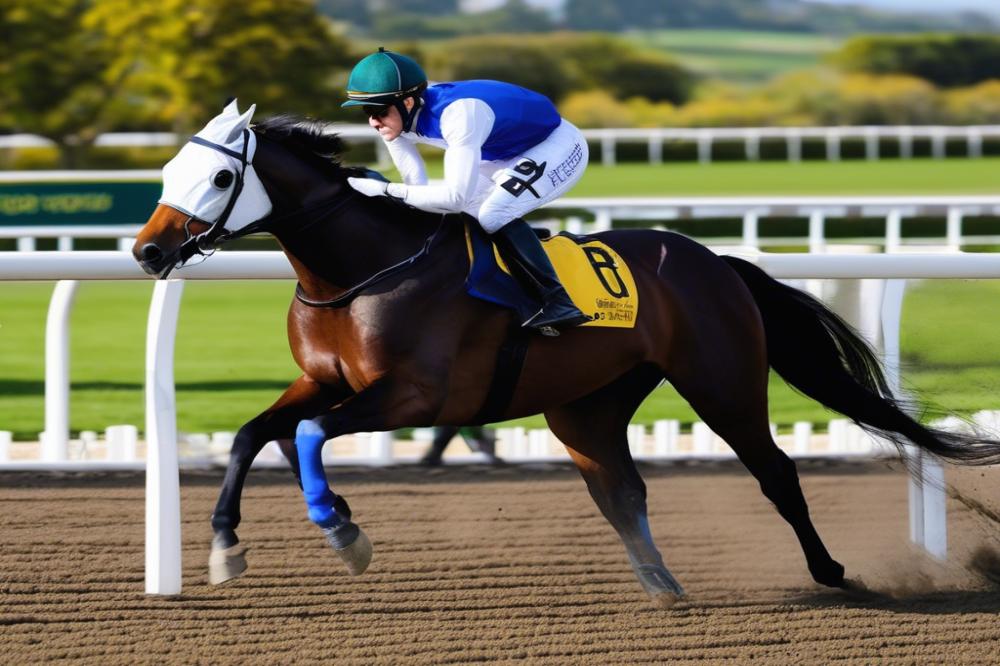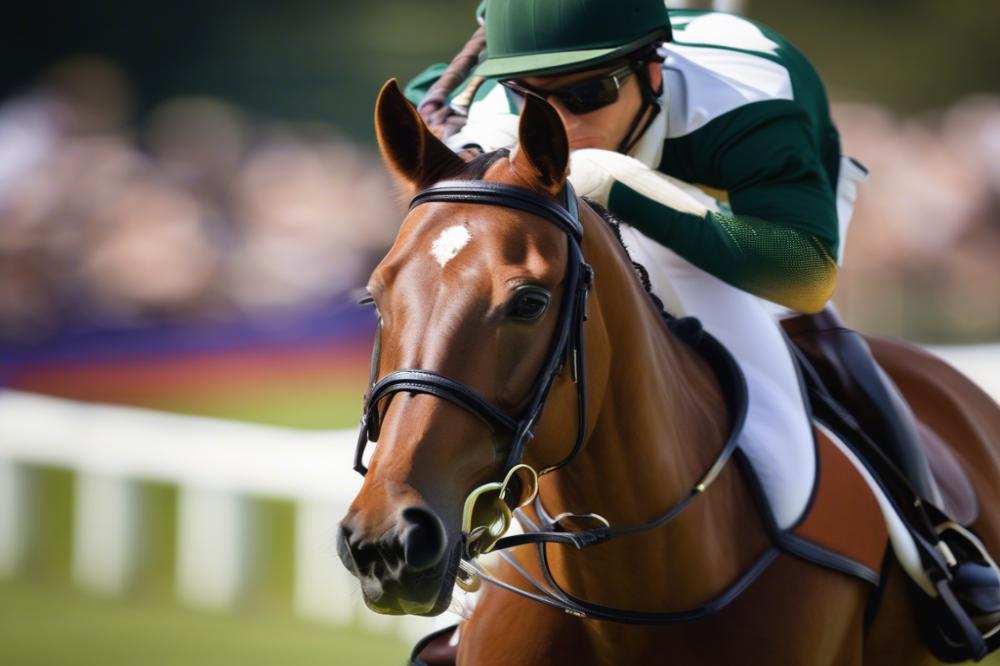Exploring the World of Jockey Attire
When you think about horse racing, what comes to mind? Most people picture thundering hooves, cheering crowds, and the thrill of the finish line. However, behind this exciting spectacle lies an important aspect that often goes unnoticed: the attire of the jockeys. Their clothing isn’t just for show; it plays a critical role in both performance and safety on the racetrack.
A well-designed outfit can make a significant difference. Jockeys need to be agile and comfortable as they guide their steeds, often among a number of horses in the world. Tight-fitting clothing allows for easier movement, while lightweight materials help keep them cool. Some might even say a jockey’s race gear is like a superhero’s costume—perfectly tailored to help them conquer the track!
For those passionate about equestrian sports, understanding jockey clothing means appreciating its impact on both racing outcomes and rider safety. Imagine a scenario where a jockey is wearing loose fabric that flaps in the wind. It could lead to distractions or even accidents. Safety features are often built into race gear, ensuring that these athletes are protected while riding at breakneck speeds.
In this article, we’ll delve into the main components of jockey attire. From the iconic silks that represent their team to safety helmets and boots, each piece plays a vital role in the sport. Plus, we’ll touch on the fascinating world of British horse breeds and how some of them have shaped the clothing styles seen today. So, saddle up! Let’s ride into the details of what jockeys wear during races.
History of Jockey Attire
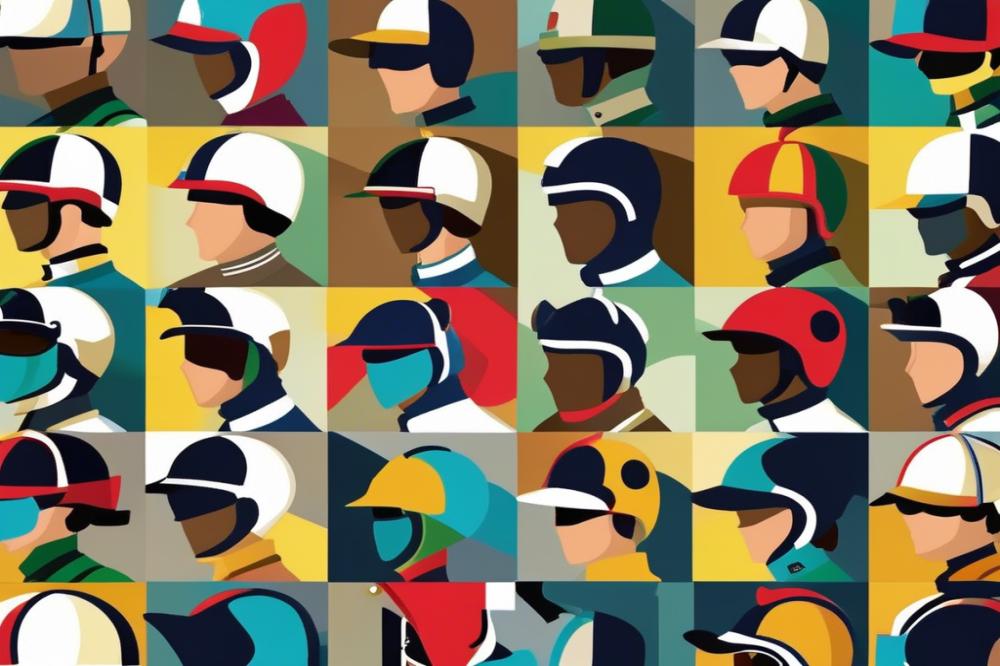
Throughout the years, the way jockeys dress has changed quite a bit. In the early days of horse racing, riders wore heavy coats and boots. These outfits were not practical for riding. As racing evolved, so did the clothing. Lightweight materials became more popular. Jockeys needed to be agile and comfortable on their mounts. This shift was crucial.
Different cultures have influenced what jockeys wear. In Europe, you might see more traditional styles, while American jockeys often sport bright colors and flashy designs. Each region has its flair. Many of these styles come from local customs, showcasing pride in their heritage. Imagine a jockey decked out in a design that tells a story. How cool is that?
Materials have played a huge role in how jockey clothing evolved. Initially, wool and cotton were common choices. They were warm but could weigh you down. Now, synthetic fibers have taken over. Lightweight and moisture-wicking fabrics help keep jockeys cool during races. They can really fly on those horses while wearing modern race gear. Flexibility is key!
Designs also changed to make riding safer. The introduction of helmets was a game-changer. Jockeys used to race without them—crazy, right? Safety gear now includes padded vests and other protective items. Comfort, style, and safety all rolled into one! It’s fascinating how something as simple as clothing can impact the sport.
Even the colors of jockeys’ outfits have significance. Owners often choose colors that represent their stables. Bright colors create a spectacle to watch during races. Those colors pop against the green of the turf, almost like a moving painting! It’s fascinating how clothing can bring a bit of joy to equestrian sports.
You could say that jockey clothing is a blend of tradition and modernity. It tells a story of horse care, speed, and safety. Who wouldn’t admire that merging of form and function? Next time you watch a race, pay attention to what the jockeys are wearing. There’s more to it than meets the eye!
Components of Jockey Attire
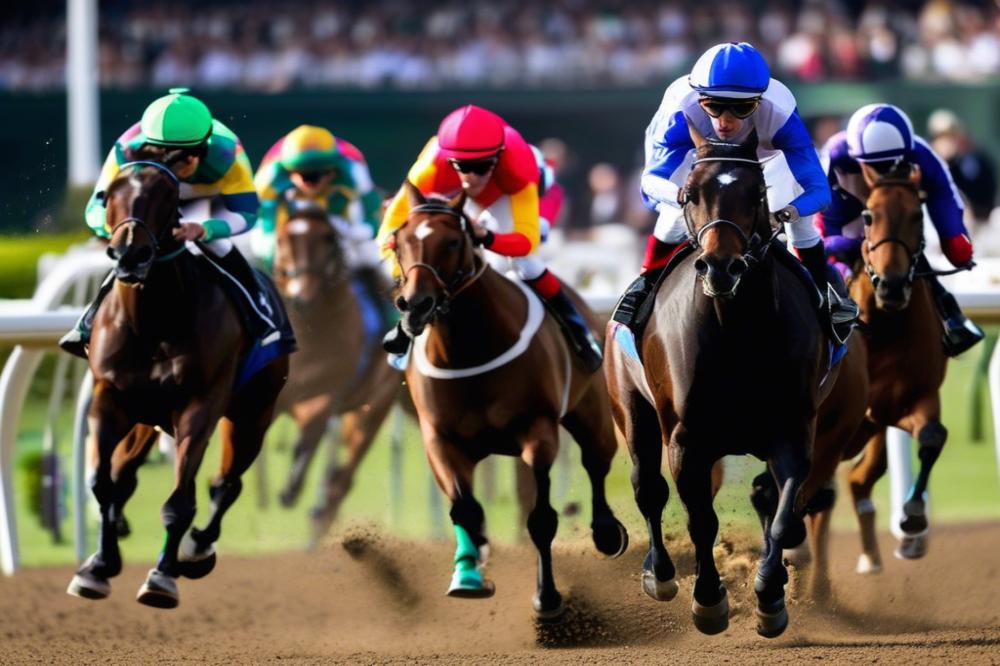
When it comes to horse racing, every detail matters, especially what jockeys wear. There’s more to jockey clothing than just looking sharp on the track. Each piece of the ensemble serves a purpose, so let’s break down the components of jockey attire.
Jockey Helmet and Its Safety Standards
A helmet is not just a fashion statement; it’s a lifesaver. Jockeys wear specialized helmets designed to protect their heads during those thrilling moments. Safety standards are strict, and every approved helmet must meet specific guidelines. A good helmet can mean the difference between a minor bump and a serious injury. They are lightweight and comfortable but pack a powerful punch in terms of safety.
Silk Shirt and Its Significance
The silk shirt is more than a colorful option; it holds deep significance in racing culture. Each jockey often sports colors and designs that represent their horse owner’s stable. A flashy pattern might catch the crowd’s eye, but it serves as a badge of honor in equestrian sports. Wearing these silks has become a tradition, adding flair to the exhilarating atmosphere of a race.
Breeches and Riding Boots: Functionality and Style
Breeches are essential for comfort and performance. They are snug and provide flexibility for the rider. Often made from breathable fabric, these pants keep jockeys cool under pressure. Riding boots, on the other hand, are tall and help with leg positioning. These boots have a slight heel to prevent slipping out of the stirrups. Both pieces strike a balance between functionality and style, ensuring that jockeys can maintain control over their steeds.
Gloves and Their Role in Grip and Protection
Gloves might seem like a small detail, but they play a big role on race day. A jockey’s grip is crucial for steering the horse, especially when the race heats up. These gloves offer both grip and protection, keeping hands safe from chafing and blisters. Additionally, they provide an extra layer of control during those intense moments when every second counts. Whether it’s a tight turn or a quick sprint, jockeys rely on these trusty helpers to hold on.
Material and Design Considerations
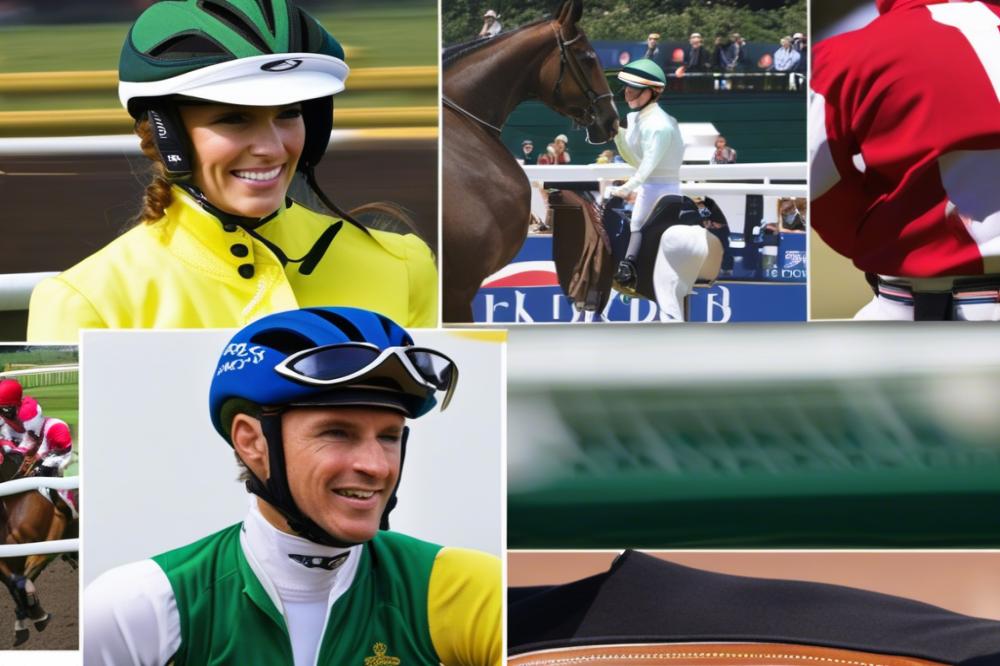
When it comes to horse racing, the materials jockeys wear are more than just fabric. Common options include polyester, nylon, and spandex. These choices are known for their durability and flexibility. After all, a jockey needs to move freely to command their horse during the race.
Lightweight fabrics play a crucial role. Heavy materials can weigh a jockey down, which no one wants when riding at speed. Think about it: even a tiny disadvantage can mean the difference between winning and losing. So, jockey clothing must feel like a second skin, allowing for quick movements and comfort.
Customization is another important factor. Each jockey has their own size and shape. This means that fitting is essential. Race gear isn’t off the rack. Tailored fits can help reduce excess fabric, which might flap in the wind. A good fit promotes confidence, and every jockey wants to feel at the top of their game.
Colors and patterns are not just for looks, either. They help spectators and officials identify jockeys on the track. Each rider typically wears a unique combination. Bright colors and striking designs make it easier to spot them amidst the commotion of a race. Plus, it adds a touch of flair to the thrilling equestrian sports scene.
Jockey Attire Regulations
Overview of Regulations Governing Jockey Attire
When it comes to what jockeys wear during races, there’s more to it than just looking good. Racing authorities, both national and international, have set rules that every rider must follow. These regulations seek to maintain a level of professionalism in the sport and ensure each competitor’s safety. Riders often don bright colors and patterns, known as silks, that represent their racing stable or owners. It’s not just about style; each design must be unique enough to be easily identified during a race.
Safety Requirements Imposed by Racing Authorities
Safety is a top priority in horse racing. Riders must wear specific items, such as a helmet to protect their heads. Most helmets meet strict safety standards to reduce the risk of injury in case of a fall. Additionally, padded vests are often required to shield the body. Many jockeys also wear special boots that provide good grip on the stirrups while being comfortable. These boots are designed to help in emergencies, allowing for a quick getaway if needed.
Differences in Regulations Across Different Racing Jurisdictions
Interestingly, rules can vary quite a bit depending on where the race takes place. Each jurisdiction sets its own standards. In some places, wearing a certain color may be mandatory, while others may focus more on the material of the clothing. In the UK, for instance, there may be different requirements compared to those in the United States or Australia. This means a rider could be fully compliant in one location and need to adjust their race gear if they travel elsewhere. It’s kind of like a game of “dress up” but with serious stakes.
Keeping these regulations in mind helps promote fairness and safety in this exciting equestrian sport. Jockey attire isn’t just about flair; it’s a blend of passion, skill, and smart choices. Next time you watch a race, you may just appreciate the work that goes into those bright uniforms a bit more!
Jockey Attire and Branding
Role of Sponsorship in Jockey Attire
Sponsorship plays a big part in what jockeys wear during horse racing events. Companies often want their logos seen by spectators and viewers. This creates a partnership between the jockeys and the brands. Many jockeys rely on sponsors for money to support their racing careers. When a jockey wears certain logos, it helps them financially and gives brands exposure. So, next time you watch a race, notice those colorful designs on their outfits. You’re looking at a mix of sport and advertisement.
How Branding is Displayed on Jockey Clothing
Branding shows up in various ways on jockey clothing. Colors and logos can be bright and eye-catching. Sponsors typically choose a unique pattern to stand out on the track. Ads might appear on jackets, pants, and even helmets! This allows brands to showcase themselves prominently in a thrilling setting. With every jump and turn, viewers can spot these logos, linking them to the excitement of equestrian sports. It’s not just about racing; it’s about making a statement.
Impact of Branding on Perceptions in the Racing Industry
Branding can shape how people view the racing world. A well-known brand might make a jockey seem more famous or successful. When a logo is associated with winners, it adds to the reputation. Fans might even feel more connected to jockeys representing brands they love. On the flip side, a brand that doesn’t fit well can lead to confusion. It all comes down to how successful branding ties into the sport. In horse racing, the right logo can create loyalty—like a favorite team jersey.
Care and Maintenance of Jockey Attire
Taking care of jockey clothing is essential. These garments come into contact with dirt, sweat, and sometimes even rain. Proper care keeps them looking sharp and ready for the next race. Let’s dive into some of the best practices for preserving race gear.
Best Practices for Preserving Jockey Clothing
First and foremost, always check the labels. Each piece of clothing has specific washing instructions. Following those can extend the life of the attire. Regular washing helps remove grime but avoid harsh detergents. They can fade colors, making the gear less vibrant. Moreover, ensure that zippers and buttons are secured before tossing items in the wash.
Sunlight is a bit of a double-edged sword. While it can help dry clothing quickly, excessive exposure may lead to fading. Consider laying items flat or using a shaded area for drying. This method keeps colors bright and fresh.
Importance of Hygiene and Performance Maintenance
Hygiene plays a significant role in equestrian sports. Dirty gear can lead to discomfort during races. Nobody wants to ride in a shirt that smells like a wet dog! Ensure your gear is not only clean but also dry before each use. Moisture can create an unpleasant environment, making it tough for jockeys to focus.
In addition to cleanliness, an important aspect is performance. Fresh attire can enhance confidence. When a jockey feels good in what they wear, it often shows on the racetrack. So, keep those clothes in top shape— your horse will appreciate it too!
Tips for Cleaning and Storing Attire Properly
Cleaning and storing attire properly is a game-changer. After a long day, it’s tempting to toss everything in a heap. Resist that urge! Instead, shake off dirt and hang items to air out. This will keep odors at bay.
For storage, opt for breathable garment bags. Plastic ones might trap moisture, leading to mildew. Over time, this can ruin even the finest jockey clothing. If possible, keep your gear in a cool, dark place. Moths love a cozy closet just as much as we do!
Sometimes, a little extra care can go a long way. Small repairs, like sewing on loose threads, can keep gear functional longer. Just think of it as giving your clothes a spa day. So next time you consider tossing something aside, remember— a little love can maintain the heart of your race gear!
Final Thoughts: The Importance of Jockey Attire
In the thrilling world of horse racing, jockey attire plays a crucial role beyond just looking good in the winner’s circle. Think about it: every piece of clothing and gear a jockey wears is designed for a reason. Comfort and safety are paramount when racing at incredible speeds. After all, no one wants to be flapping around like a flag in the wind while trying to control their mount!
Performance can be significantly influenced by what a jockey dons. The right fit can make a huge difference. Tight clothing can help reduce wind resistance, allowing a jockey to stay low and streamlined. On the other hand, a heavier outfit could slow them down. It’s like choosing the right shoes for a sprint versus a marathon; the wrong choice could cost them the race.
Branding also comes into play. Bright colors and bold designs not only catch the eye of fans in the stands but also represent a jockey’s personality and their connections to their racing team. Just like a sports team’s jersey, these outfits help create an identity that can resonate beyond the racetrack. Think about how eager fans become when they support their favorite jockey clad in vibrant silks. It can spark a sense of pride akin to cheering for a superstar athlete.
As we wrap up, let’s remember to appreciate the specialized nature of jockey clothing. Each item has been meticulously thought out, from the lightweight helmet to the skin-tight breeches. It’s not just about looking snazzy while riding; it’s about safety and performance in a sport where every second counts. So next time you see a race, take a moment to admire those silks zooming by. Underneath all that flashy fabric, there’s a tremendous amount of skill, strategy, and teamwork at play, all striving to guide their steeds through the hustle and bustle, often alongside the intricacies of things like draw reins on horses and understanding horse herd behavior. Racing really is more than just a sport; it’s a captivating blend of art and science.

